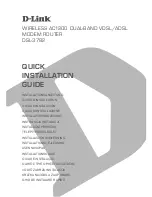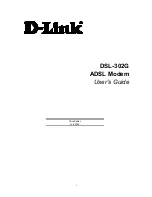
Prestige 861 VDSL Modem
5-4
VDSL Commands
Table 5-3 Service Characteristic
CHARACTERISTIC
CBR
RT-VBR
NRT-VBR
UBR
Guaranteed Bandwidth
3
3
3
2
Good for Real-Time Traffic
3
3
2
2
Suitable for Bursty Traffic
2
2
3
3
5.5 Interleave
Delay
Interleave delay is the wait (in milliseconds) that determines the size of a single block of data to be
interleaved (assembled) and then transmitted. Interleave delay is used when transmission error correction
(Reed- Solomon) is necessary due to a less than ideal telephone line. The bigger the delay, the bigger the data
block size, allowing better error correction to be performed. This may sometimes be referred to as a “slow
channel”.
An interleave delay of “0” means no interleaving takes place and transmission is faster (a “fast channel”).
This would be suitable if you have a good line where little error correction is necessary.
Reed-Solomon codes are block-based error correcting codes with a wide range of applications. The Reed-
Solomon encoder takes a block of digital data and adds extra "redundant" bits. The Reed-Solomon decoder
processes each block and attempts to correct errors and recover the original data.
5.6 G.Hs
The G.hs (G standards handshake) is a list of standards DSLAMs (DSL Access Multiplexer) use to select a
common mode of operation and exchange data. G.hs standards include ITU-T Recommendations G.992.1,
G.992.2, G.993.1 and working draft T1E1.4/2000 009R3 VDSL contribution. G.hs occurs before the DSL
initialization sequence.
When G.hs is enabled in the VDSL modem, the DSLAM dictates (and overrides) all modem VDSL
parameters.
5.7 SNR
(Signal-to-Noise-Ratio)
The Prestige uses SNR(Signal-to-Noise-Ratio) to determine line quality. SNR is the ratio of the amplitude of
the actual signal to the amplitude of noise signals at a given point in time. A slow SNR indicates poor line
quality. When SNR (upstream or downstream) falls below a pre-determined threshold, the Prestige then uses
rate adaptation.
















































